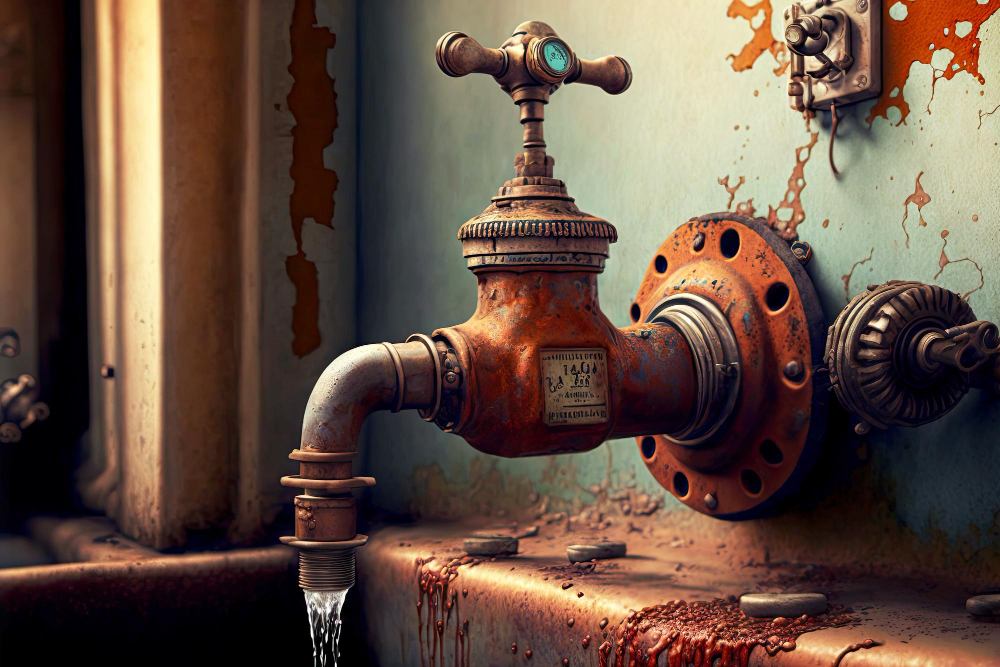Call This Monday to Get $50 OFF
Call us today
214-943-2424

Running water is an indispensable part of modern life, and its availability at the turn of a faucet is often taken for granted. However, the journey to harnessing and distributing water within our homes has a rich history that spans centuries.
The earliest civilizations recognized the importance of water for sanitation and daily life. Ancient Rome, known for its advanced engineering, constructed intricate aqueducts to transport water from distant sources to urban areas. The aqueducts utilized gravity to provide a constant flow of water, laying the groundwork for the concept of running water in a city.
The Renaissance marked a period of revival in arts, sciences, and architecture. During this time, there was a renewed interest in improving living conditions. In the 16th century, Sir John Harington, a godson of Queen Elizabeth I, invented the first flush toilet. Although not widely adopted, this invention laid the foundation for future developments in indoor plumbing.
The 19th century witnessed significant advancements in plumbing technology, leading to the widespread adoption of indoor plumbing. Cities faced challenges with waterborne diseases, prompting the need for cleaner water sources and improved sanitation.
In 1848, the first modern water treatment plant was built in Scotland, using sand filtration to purify water. Simultaneously, plumbers began installing cast-iron pipes for indoor plumbing, replacing older materials like lead and wood. The advent of the flush toilet and the inclusion of indoor plumbing in new constructions marked a transformative era.
The 20th century brought further advancements in plumbing technology. Copper pipes replaced cast iron, providing a corrosion-resistant and durable option. Plastic pipes, particularly PVC and PEX, gained popularity for their versatility and ease of installation.
The introduction of water heaters and water softeners added comfort and convenience to households. Plumbers adapted to new technologies, incorporating innovations like video inspection tools to diagnose pipe issues without invasive measures.
In the present day, technology continues to shape the plumbing industry. Smart plumbing systems allow homeowners to monitor water usage, detect leaks, and control fixtures remotely. These advancements not only enhance convenience but also contribute to water conservation efforts.
Sustainability has become a key focus in modern plumbing services. Plumbers are increasingly promoting eco-friendly practices, such as installing low-flow fixtures, efficient water heaters, and rainwater harvesting systems. The emphasis on sustainable plumbing aligns with global efforts to preserve water resources and reduce environmental impact.
As we look ahead, the future of running water and plumbing repair services holds exciting possibilities. Advancements in materials, such as corrosion-resistant alloys and bio-compatible polymers, may further improve the durability and safety of plumbing systems.
Smart technologies will likely play an even more significant role, with the integration of artificial intelligence for predictive maintenance and real-time monitoring. Plumbers will continue to adapt to new challenges and innovations, ensuring that the flow of running water remains a reliable and efficient aspect of our daily lives.
As we enjoy the convenience of running water in our homes, it's essential to appreciate the historical milestones and the ongoing commitment to providing clean, safe, and sustainable water services. The evolution of plumbing services mirrors our evolving understanding of hygiene, health, and the indispensable role that running water plays in our lives. With that being said, if you ever feel the need to contact a professional plumbing service, Texas Rooter is here for you.
We all know that extremely cold weather can lead to frozen and burst pipes.…
Read MoreHave you ever walked into your basement after a heavy rain and found water everywhere?…
Read MoreHave you ever been startled by a strange noise coming from your water heater? Those…
Read MoreWater isn't always as pure as it seems. Contaminants—from harmless minerals to potentially harmful chemicals—can…
Read MoreImagine you’re hosting a backyard barbecue in sunny Texas when you…
Read More